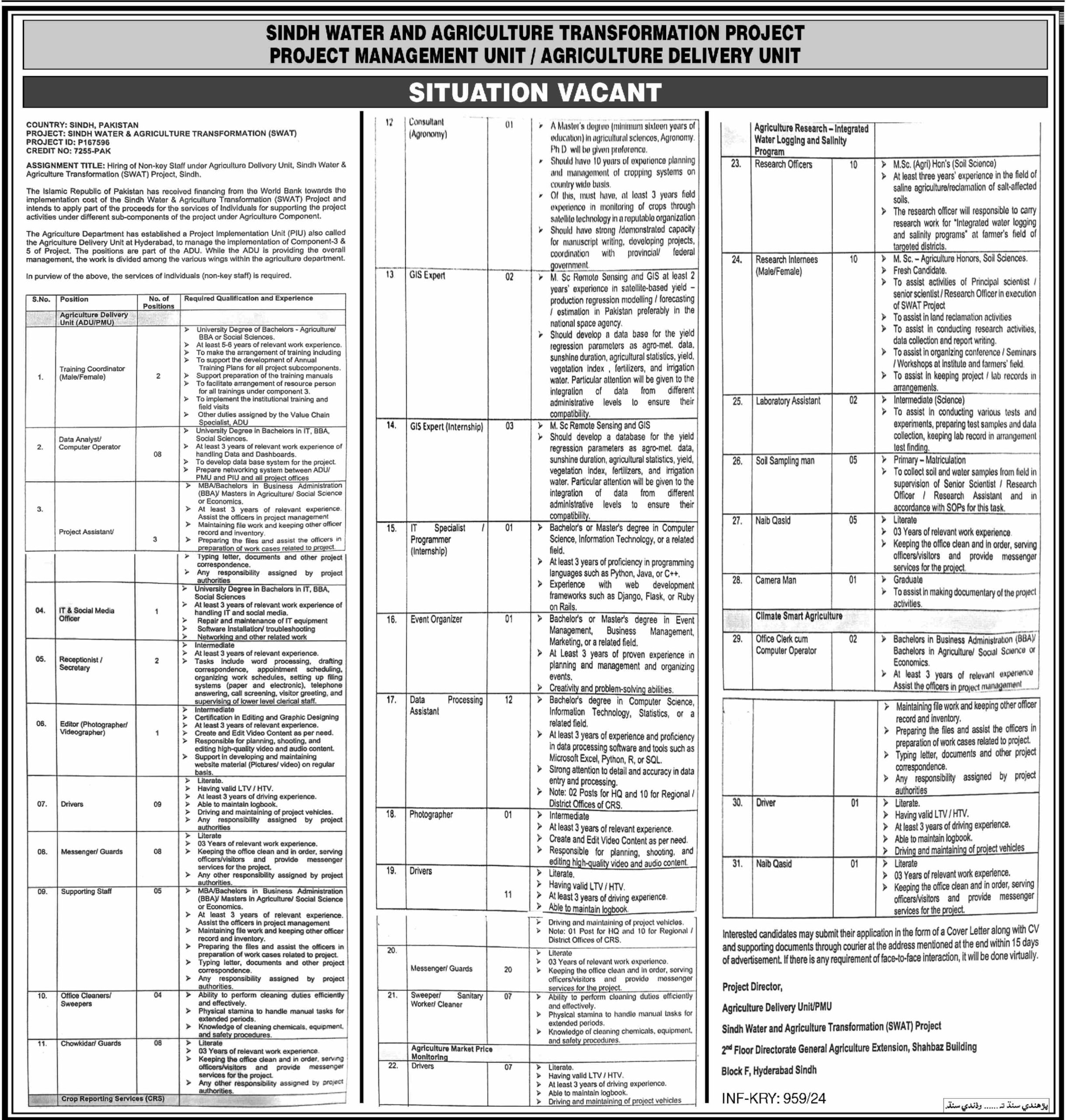Sindh Water & Agriculture Transformation Project SWAT Jobs 2024
Date Posted / Updated: 05 April, 2024 Category / Sector: Government Newspaper: Dawn Jobs Education: Primary | Middle | Intermediate | Bachelor | Master | Phd | BCS | BBA | MBA | BIT | DAE | M.sc | BS | ICS Vacancy Location: Hyderabad, Sindh, Pakistan Organization: Agriculture Department Job Industry: Management Jobs Job Type: Full Time Expected Last Date: or as per paper ad Latest Agriculture Department Management Posts Hyderabad 2024 “Before the deadline of approximately April 20, 2024, …
